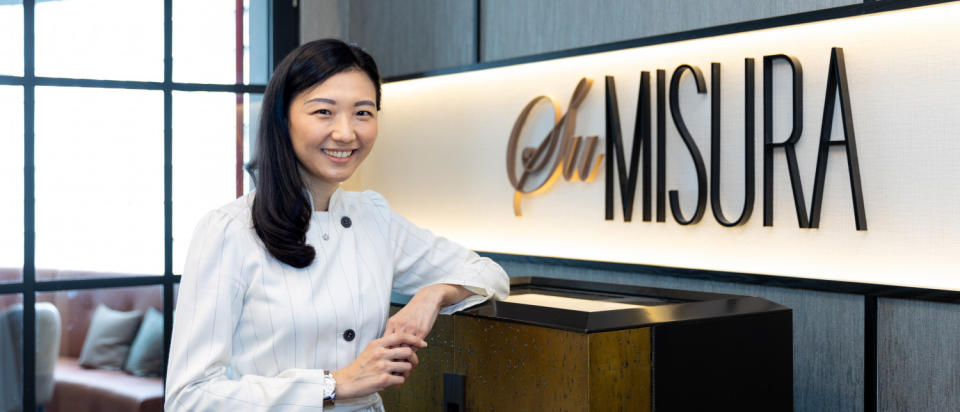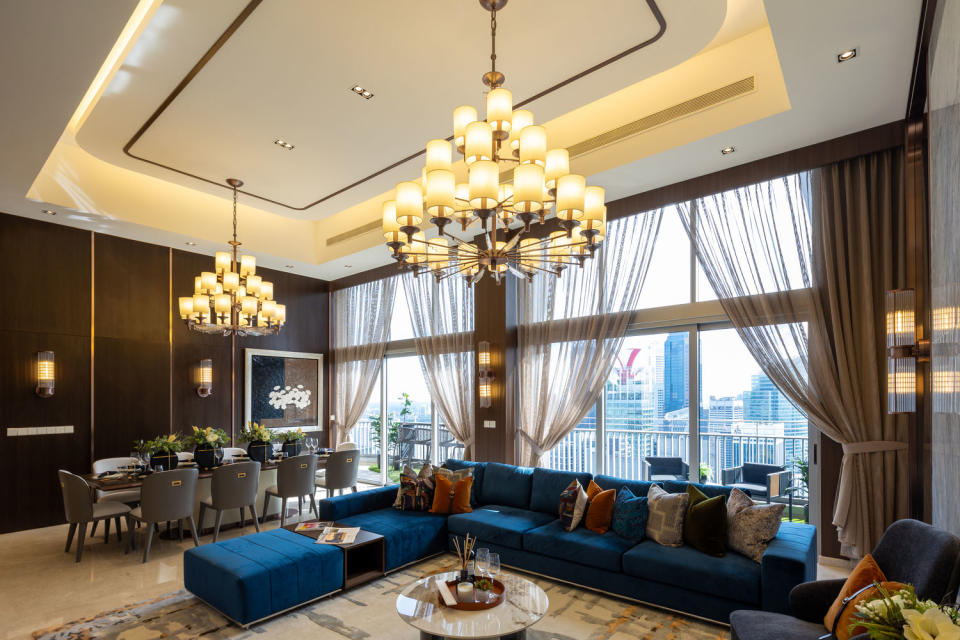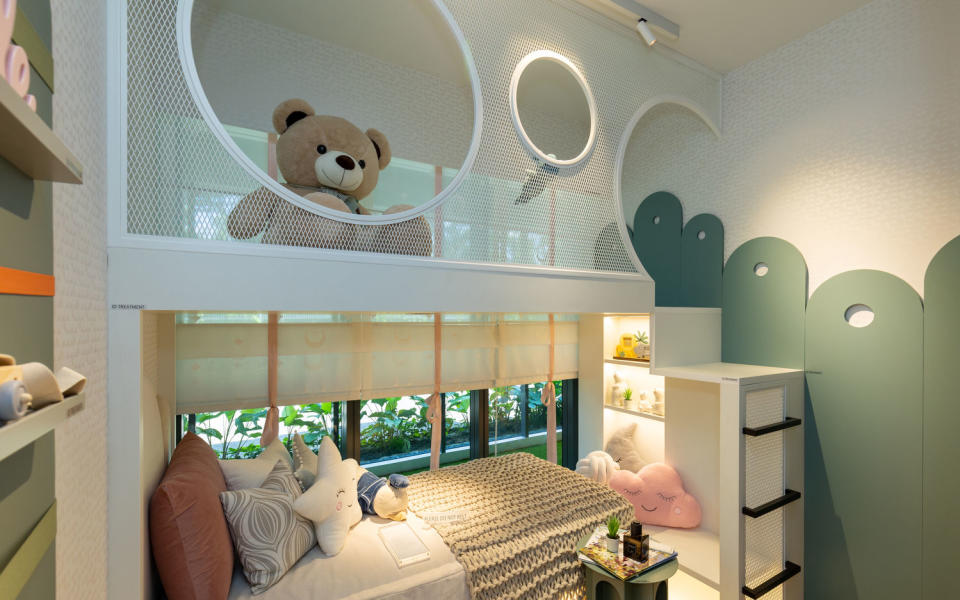SuMisura’s Angela Lim on giving thought to design and small spaces

Lim: I always try to find the right balance between traditional luxury and modern understated luxury. (Picture: Samuel Isaac Chua/The Edge Singapore)
EDGEPROP (SINGAPORE) - Angela Lim, director and co-founder of interior design firm SuMisura, describes her design sensibilities and personal style as “progressive and I practise contemporary design with a very open mind”.
Her approach towards home interior design reflects the dynamism of the industry and the cyclical rise and fall of fashionable trends she has witnessed over the past 13 years at her firm. “I always try to find the right balance between traditional luxury and modern understated luxury,” she says.
“The way we approach design has to be progressive and moving forward with the times,” she says. As a leading professional in her industry, Lim and SuMisura are among a handful of dependable local designers that real estate developers and high-end homeowners regularly call on.
A judge of this year’s EdgeProp Excellence Awards (EPEA 2022), Lim’s expertise in design adds to the depth of the judges’ critique in shortlisting the winning developments this year.
Read also: Forett at Bukit Timah: A visual feast at the sales gallery
Singling out thoughtful design
“Usually, it is not challenging for trained designers to demonstrate efficient space usage, particularly if the layout is predictable which is the case for most regularly-sized units in Singapore. However, thoughtful designs are more difficult to come by,” says Lim
In her experience, projects with units that have a more unique layout provide an opportunity for designers to be more creative. It is a chance to envision how to proportionately fit-out that space, keeping it aesthetically pleasing and effective for the right target market, she says.
The widespread use of modular construction methods, such as Prefabricated Prefinished Volumetric Construction (PPVC) has led to an evolution in the unit layout design for new public and private residential developments in Singapore.
This typically results in a more uniform unit layout across any one development and saves time designing each PPVC mould. “In this regard, efficiency is key here and rewards developers in terms of construction time saved,” says Lim.
Making small spaces work harder
Creative design can come in many ways and does not need to be confined to furniture placement or furniture choice. “We use different types of transformable furniture that allow us to use a space at different times of the day and express each differently,” says Lim.
This year, she notes that many of the shortlisted projects at the EPEA 2022 showcased examples where designers have cleverly created pockets of spaces that can be efficiently used for a variety of purposes.
For example, kitchen countertops or dining spaces could double up as a temporary workspace during the day. Removing some walls and installing flexi-doors could turn a daytime dining room space into a family lounge area or entertainment space at night.

The living and dining area of the V on Shenton duplex penthouse designed by Lim. (Picture: Samuel Isaac Chua/The Edge Singapore)
As the unit layout design of residential developments in Singapore has evolved over the years, developers have become more experienced in cutting down under-utilised spaces such as utility areas and circulation spaces, says Lim.
She adds that “developers are definitely making better use of the remaining living space and making each square footage count”.
Thus, instead of having a long corridor that branches out to some of the bedrooms, newer units tend to feature a shorter corridor with a more efficient distribution of the bedrooms. Utility rooms and larger kitchens also tend to make way for a smaller kitchen that connects seamlessly to the living and dining room. Moreover, an open-concept kitchen that connects to the living and dining rooms makes the entire space feel more connected and aesthetically more pleasing, says Lim.
“With clever space planning I think developers and designers have managed to fit in all your needs within that small space,” she says, adding that “from a visual perspective, I think there is relatively little impact on the total sense of space. Previously, areas like the enclosed kitchen, yard and maid’s room would have been tucked away and normally out of sight”.
More recently, she notes that designers are beginning to design upwards, making better use of vertical spaces within homes. For example, designers are making a deliberate effort to also make better use of air space, installing hanging storage or creating bunk beds with a top play area.
“I see how designers are using transformable furniture or hidden gadgets to make workspaces and countertop spaces more purposeful. With a smaller floorplate, designers are also practising building or designing upwards to make better use of vertical spaces for storage or display,” says Lim.

Designers are making an effort to make better use of air space, such as this bunk bed with a top play area at AMO Residence showflat designed by SuMisura. (Picture: Samuel Isaac Chua/The Edge Singapore)
Proposing such design ideas should come from the designer, says Lim. “It is really an idea that designers have to initiate or promote to developers or homeowners, helping them realise that spaces can be used to improve the flow of their homes.”
EdgeProp Excellence Awards 2022
Numerous submissions to the annual EdgeProp Excellence Awards are shortlisted by the panel of judges each year. In addition to the quantitative assessment, the judges also lend their own expertise to evaluate each shortlisted project.
“The judges go through all the project information that comes with each submission, it can be challenging to assess each project accurately based on the beautiful explanation and visuals alone,” says Lim. Thus, she values the opportunity to visit the actual site and see the development up close.
“That is when having the architect or the designer to explain to the judges the inspiration, thought process, implementation and with the end product shown in its physical form allow the judges to evaluate more accurately,” says Lim.
There are other questions that she keeps in mind while evaluating each project. “For example, I’ll ask myself if the design of the unit fulfils its purpose and achieve what it set out to do. Or is the show flat more than just aesthetically pleasing and is it unique to make it memorable to the judges?”
She places a strong emphasis on the uniqueness of each project. “In our profession, the judges see many different projects and show flats, but there are certain projects that we recall,” she says. She has a strong recollection of Park Nova, a freehold luxury project by Hong Kong-listed developer Shun Tak Holdings. The project won four awards at the EdgeProp Excellence Awards 2021, including the Showflat Excellence (Luxury) award.
SuMisura — Singapore and beyond
SuMisura serves a very select group of direct business clients and a niche group of high-end homeowners. According to Lim, the firm is “very selective of the projects that we want to do and the sophisticated clients we want to do it for. At the end of the day, the project must be rewarding for both the consultant, as well as the client.”
Lately, Lim has steered the firm into taking up more business in the Southeast Asia region, particularly in nearby countries such as Malaysia, Indonesia, Vietnam and Cambodia.
“It has been very exciting for the company and me because doing projects overseas forces us to go back to reading up and polishing our skills. I have been engaged with different people on the ground to understand what kind of design homeowners in different countries prefer,” says Lim.
For her, it has been a true learning process and she has picked up a variety of cultural tastes and preferences that influence how homeowners want their homes decorated. For example, avoiding the use of sculptures of people or animals in certain countries or setting aside a space for a prayer room, an essential in countries like Malaysia and Indonesia.
“It has been a steep learning curve learning the cultural differences and communicating with the locals. It can be challenging when you expect things to be done with the typical Singaporean mindset and expectations,” says Lim.
But at the end of the day, it is about understanding and respecting those cultural differences and embarking on each home design with a new pair of lenses, she says.
The EdgeProp Singapore Excellence Awards 2022 will be held on Oct 21, 2022
See Also:
Singapore Property for Sale & Rent, Latest Property News, Advanced Analytics Tools
New Launch Condo & Landed Property in Singapore (COMPLETE list & updates)
Inside a modern Art Deco-inspired home at New York’s One Wall Street
Ikea and Livspace to offer interior design solutions at Kuala Lumpur outlets
En Bloc Calculator, Find Out If Your Condo Will Be The Next en-bloc

 Yahoo Finance
Yahoo Finance 